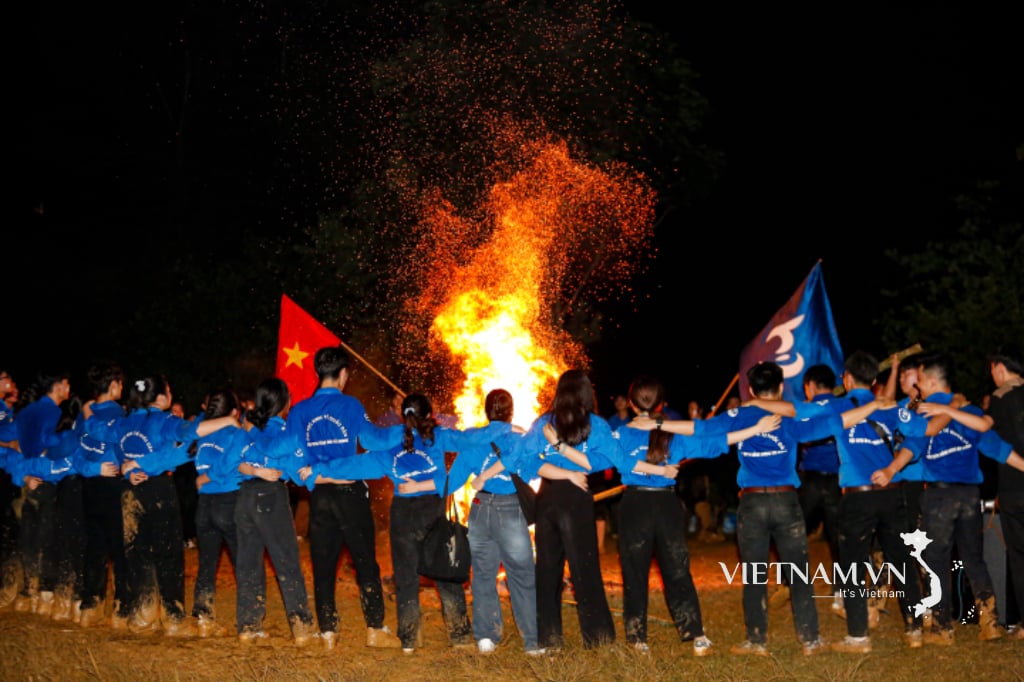
UAV MQ-9 Reaper (Photo: Getty).
On the morning of March 14, an American MQ-9 Reaper reconnaissance unmanned aerial vehicle (UAV) crashed into the Black Sea. Washington accused a Russian Su-27 fighter jet of approaching dangerously close and dumping fuel directly on the UAV multiple times. The Su-27 then collided with the MQ-9's propeller engine, causing the American UAV to fall into the sea.
Meanwhile, Moscow said there was no collision and that the US UAV crashed due to a sudden change in direction that caused the device to lose control. Russia also accused the US UAV of not turning on its identification signal response system and "violating the boundaries of the airspace temporarily established for special military operations".
The incident marked the first time Russian and US military aircraft have come face-to-face since Moscow launched its military campaign in Ukraine more than a year ago and risks further escalating relations between Moscow and Washington. It also appears to be the first time since the height of the Cold War that a US aircraft has crashed after encountering a Russian fighter jet.
AFP news agency quoted a French expert as saying that the incident was considered "unusual" and "exceptional", but did not show a clear change in stance.
“This is a return to the situation at the end of the Cold War when Western aircraft were occasionally destroyed,” the French expert added, referring to the Soviet Union's frequent firing at US balloons in the 1980s.
According to CNN , US reconnaissance flights have been frequent in international airspace over the Black Sea over the past few years, and the area has been heavily militarized since Russia annexed Crimea in 2014. Therefore, it is not unusual for a US drone to be detected over this sea.

Black Sea location (Photo: Sky).
Since Russia launched its military campaign in Ukraine, NATO member states have been flying aircraft over the Black Sea daily, taking care not to violate Russian airspace. The moves are partly to gather intelligence, but also to send a message to Russia that NATO remains on high alert as the conflict rages on its eastern flank.
"NATO monitors everything that happens in the Black Sea, nothing happens there without our knowledge. We want to make sure that Russia is aware of our presence along the border, just as we are aware of their presence," Italian Colonel Michele Morelli said last December.
In recent years, Russia has also not hesitated to send a message to NATO by sending military aircraft close to the airspace of European countries.
British and German fighter jets were scrambled to intercept a Russian aircraft near Estonian airspace on March 14, the British Ministry of Defense said. Britain and Germany are conducting joint air reconnaissance missions over Estonia as part of efforts to reinforce NATO's eastern flank.
Since Russia annexed Crimea in 2014, NATO’s eastern flank members – the three Baltic states, Poland, Bulgaria and Romania – have benefited from increased air surveillance from NATO. In 2022, NATO air forces across Europe scrambled some 570 times to intercept Russian military aircraft approaching alliance airspace, according to NATO. However, most of the interceptions occurred over the Baltic Sea, not the Black Sea.
"The vast majority of air encounters were safe and professional. In some cases, Russian military aircraft conducted risky maneuvers near unarmed allied reconnaissance aircraft flying in international airspace," a NATO official said.
“Russian military aircraft often do not send codes indicating their position and altitude, do not file flight plans or communicate with air traffic controllers, posing a potential risk to civil aircraft,” NATO said. NATO fighter jets would then be scrambled to intercept the Russian aircraft and provide escort if necessary.
The conflict in Ukraine, with its significant concentration of armed forces in the region's airspace, has increased the risk of incidents that could spark an escalation scenario.
Britain accused the Russian air force of launching a missile near a Royal Air Force plane on patrol over the Black Sea in late September last year. NATO officials also accused Russian military aircraft of flying unsafely over NATO ships on routine patrols in the Baltic Sea in November.
"It is extremely rare for an aircraft to fly over a country's territory. The usual scenario is a transit over international waters, outside sovereign territory, but in the airspace where air traffic controllers in the Baltic operate to ensure the safety of flights," said a French air force officer.
Immediately after the US UAV crash, the US European Command warned that Russia's "aggressive" actions were dangerous and could lead to miscalculation and unintended escalation. US lawmakers also harshly criticized Russia's move and demanded a response.
However, some experts say the incident is unlikely to push US-Russia tensions out of control.
Although there have been previous incidents of collisions with Russian aircraft, this incident involved an American drone, so tensions are unlikely to flare up, according to Becca Wasser, an expert at the Center for a New American Security think tank.
"It's deeply concerning in the context of what happened, but it was a drone so it also reduces the risk of escalating tensions," Wasser said, referring to a similar incident in 2019 when Iran shot down an RQ-4 Global Hawk drone without a direct US military response.
Mary Ellen O'Connell, an expert on international law and the use of force, said the US should not respond to Russia with direct force. "While the (US) drone may be conducting reconnaissance for Ukraine, Russia could disrupt the Reaper's (UAV) operations under the law of armed conflict, although Russia may choose a better way to do so. So far, the US has been successful in supporting Ukraine without directly confronting Russia. That approach must continue," O'Connell said.
Source

































































































Comment (0)